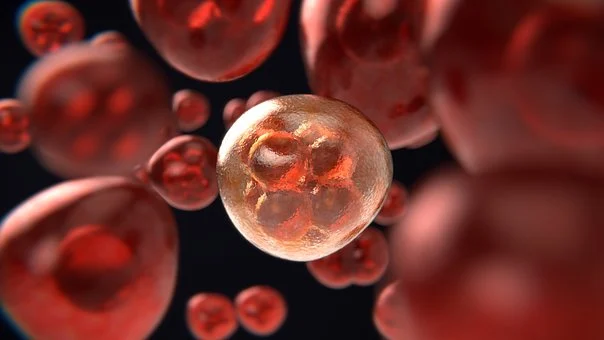Can 3d printer resin cause cancer?
As the use of 3D printing technology becomes more prevalent, concerns around the safety of materials used in the process are increasing. One of the most common materials used in 3D printing is resin, which raises the question: can 3D printer resin cause cancer?

Resin has been a crucial component in the 3D printing industry for years, allowing manufacturers to create intricate and durable objects. However, as with any new technology, questions around safety and toxicity have arisen. Some studies suggest that exposure to certain chemicals in resin may lead to health issues, including cancer.
The potential health risks of 3D printer resin are a topic of concern for many manufacturers and consumers alike. As the use of 3D printing technology continues to grow, it’s important to understand the risks associated with this material. In this article, we’ll explore the research on the safety of 3D printer resin and whether or not it poses a risk for cancer.
What is 3D Printer Resin?
3D printer resin is a type of liquid plastic used to create three-dimensional objects. It is often used in 3D printing, also known as additive manufacturing, which involves adding successive layers of material to build up an object. The resin is typically composed of a photopolymer that hardens under the influence of ultraviolet light.
This allows for greater precision and detail than traditional manufacturing processes, such as injection molding. 3D printed objects made from resin can be used to create prototypes, tools and parts for engineering, or even decorative items like jewelry. In recent years, 3D printing technology has become more accessible with the advent of desktop printers, making it easier for hobbyists and professionals alike to use this powerful tool.
Types of Resins Used in 3D Printing
There are various types of resin used for 3D printing, each with its own characteristics and advantages. Photopolymer resins are the most common type of resins used in 3D printing, as they can be cured by ultraviolet light to create a solid object. These resins come in a variety of colors and textures, making them ideal for creating prototypes or decorative items.
Epoxy resins offer greater strength and durability than photopolymers, making them useful for creating parts and tools that need to withstand wear and tear. Polyamide resins are suitable for medical applications due to their biocompatibility and ability to withstand high temperatures.
Carbon fiber-filled resins can increase an object’s rigidity, while metal-filled resins can give objects a metallic appearance. With so many different options available, it is important to research the best resin for your specific application before beginning your 3D printing project.
Can 3D Printer Resin Cause Cancer?
At this time there is no scientific evidence suggesting that 3D printer resin causes cancer or other health issues when handled properly and with adequate safety measures in place. The majority of materials used in resin printing do not contain any known carcinogenic substances or volatile organic compounds (VOCs).
That said, it is important to keep work areas well ventilated when using resin-based printers, as the fumes created by some types of resin may cause irritation if inhaled in large quantities over long periods of time. Additionally, it is recommended that you use gloves and protective eyewear while working with these materials to avoid contact with skin or eyes.
Potential Health Risks Associated with 3D Printer Resin
Although the majority of 3D printer resins are non-toxic, there are potential health risks associated with their use. Resin fumes can be irritating and cause respiratory problems when inhaled in large quantities over long periods of time, so proper ventilation should always be used when printing with resin-based materials.

Additionally, some types of resin may contain trace amounts of chemicals that can cause skin irritation or allergic reactions if handled without gloves. Finally, it is important to store resins away from heat sources or direct sunlight as exposure to high temperatures can cause the resin to degrade and release hazardous vapors. Taking these precautions will help ensure a safe working environment and minimize any potential health risks associated with 3D printer resin.
Does 3D Printer Resin Cause Cancer?
Although the exact health risks associated with 3D printer resin are still being investigated, there is currently no evidence to suggest that it can cause cancer. While some studies have found trace amounts of potentially carcinogenic chemicals in certain types of resin, their levels were too low to pose a significant risk.
However, research is ongoing and it is important to practice caution when handling any type of 3D printing material. Proper ventilation should always be used and protective gear such as gloves should be worn when handling resin to reduce the potential for skin irritation or allergies.
Furthermore, storing resins away from heat sources or direct sunlight can help minimize exposure to potentially hazardous vapors. Taking these precautions will help ensure a safe working environment and reduce any potential risk of developing cancer from 3D printer resin.
Overview of Research on the Possible Link between 3D Printer Resin and Cancer
Research on the potential link between 3D printer resin and cancer is still in its early stages. While some research has identified trace amounts of potentially carcinogenic chemicals in certain types of resin, the levels were too low to pose a significant risk. Additionally, there have been no studies that demonstrate a direct connection between exposure to 3D printer resins and cancer.
Therefore, at this time, it is impossible to conclude that 3D printer resin causes cancer or increases one’s risk of developing it. However, further research is needed in order to determine any long-term effects of exposure to 3D printer resins. Until more data is available, it is important to take precautions when handling any type of 3D printing material by using proper ventilation and wearing protective gear such as gloves. Taking these steps will help ensure a safe working environment and reduce any potential health risks associated with 3D printer resins.
Conclusions from the Existing Studies
Based on the existing studies, it is not possible to definitively conclude that exposure to 3D printer resins causes cancer or increases one’s risk of developing it. However, trace amounts of potentially carcinogenic chemicals were found in some types of resin, and more research is needed to determine any potential long-term effects.
Until then, it is important to take precautions when using 3D printer resins by wearing protective gear and using proper ventilation. This will help ensure a safe working environment and reduce any potential health risks associated with 3D printing materials.
Safety Precautions to Take When Working with 3D Printer Resin
When working with 3D printer resin, it is important to take safety precautions to protect yourself from any potential health risks associated with the materials. Wearing protective gear such as gloves, goggles, and a respirator is recommended when handling the resin. Additionally, make sure you are in a well-ventilated area when printing or working with the resin. It is also important to ensure that you are using resins that have been tested for safety and certified by a reputable company.

Finally, be sure to properly dispose of any unused or expired resins according to your local regulations. By taking these safety precautions when working with 3D printer resin, you can help reduce any potential health risks and ensure a safe working environment.
Personal Protective Equipment (PPE) Guidelines for Working with 3D Printer Resin
Personal Protective Equipment (PPE) is an important part of ensuring a safe environment when working with 3D printer resin. PPE should be worn at all times when handling the resin, including gloves, goggles and a respirator. It is also important to ensure that you are working in a well-ventilated area to help reduce any potential inhalation risks associated with the resin fumes.
Additionally, make sure that any resins you are using have been tested for safety and certified by a reputable company. Finally, always be sure to properly dispose of any unused or expired resins according to your local regulations. By following these PPE guidelines when working with 3D printer resin, you can help protect yourself from any potential health risks associated with the materials.